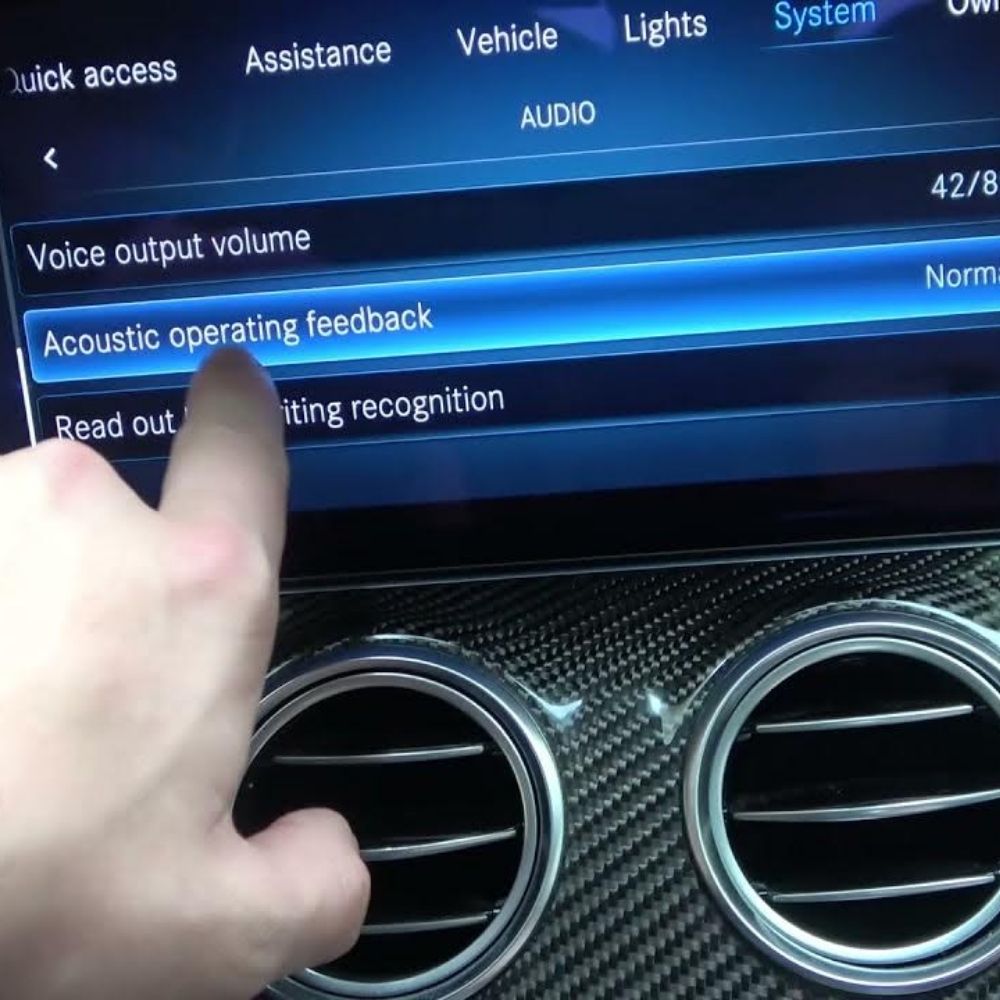
What Causes DTC P0136 On An Audi And How To Fix It?
Contents
- 1. What Are The Common Symptoms Of A P0136 Code On An Audi?
- 2. What Does The P0136 Code Mean Specifically For An Audi?
- 3. How Serious Is The P0136 Error Code On An Audi?
- 4. What Are The Primary Causes Of The P0136 Error In Audi Vehicles?
- 4.1. Faulty Oxygen Sensor
- 4.2. Exhaust Leaks
- 4.3. Wiring Issues
- 4.4. Catalytic Converter Failure
- 5. How Do You Diagnose The P0136 Code On An Audi?
- 5.1. Using An OBD-II Scanner
- 5.2. Inspecting The Oxygen Sensor
- 5.3. Checking The Wiring
- 5.4. Examining The Exhaust System
- 5.5. Evaluating The Catalytic Converter
- 6. What Are The Steps To Fix A P0136 Code On An Audi?
- 6.1. Replacing The Oxygen Sensor
- 6.2. Repairing Or Replacing Damaged Wiring
- 6.3. Fixing Exhaust Leaks
- 6.4. Replacing The Catalytic Converter
- 7. Can AutoExplain.com Help Me Diagnose And Fix The P0136 Code On My Audi Remotely?
- 8. What Are The Benefits Of Using AutoExplain.com For Audi Repairs?
- 9. How Can I Contact AutoExplain.com For Remote Support?
- 10. What Other Services Does AutoExplain.com Offer For Audi Owners?
DTC P0136 on an Audi indicates an issue with the oxygen (O2) sensor circuit, specifically the sensor located downstream of the catalytic converter (Bank 1, Sensor 2). This error can stem from various factors, including a faulty O2 sensor, exhaust leaks, or issues with the sensor’s wiring. AutoExplain.com offers remote diagnostic and repair assistance to swiftly resolve such issues, ensuring your Audi runs efficiently. By contacting us via WhatsApp or email, you can leverage our expertise to diagnose and rectify the problem accurately.
1. What Are The Common Symptoms Of A P0136 Code On An Audi?
The common symptoms of a P0136 code on an Audi include a lit check engine light, reduced fuel economy, and potentially no noticeable performance issues. However, more severe cases might present misfiring or exhaust leaks. The presence of these symptoms suggests that the oxygen sensor is not functioning correctly.
- Check Engine Light: The most immediate sign is the illumination of the check engine light on the dashboard.
- Reduced Fuel Economy: The engine control unit (ECU) might not be optimizing the fuel mixture, leading to decreased mileage.
- Misfiring: Incorrect air-fuel ratios can cause the engine to misfire, leading to rough idling or hesitation during acceleration.
- Exhaust Leaks: Issues related to the oxygen sensor can sometimes be related to or exacerbate exhaust leaks, affecting the overall performance and emissions.
2. What Does The P0136 Code Mean Specifically For An Audi?
The P0136 code specifically for an Audi indicates a malfunction in the oxygen sensor circuit (Bank 1, Sensor 2), which is located after the catalytic converter. This sensor monitors the efficiency of the catalytic converter by measuring the oxygen levels in the exhaust gas. When the ECU detects that the signal from this sensor is out of the normal range, it triggers the P0136 code. This can result from several issues, including a faulty sensor, wiring problems, or exhaust leaks.
- Oxygen Sensor (Bank 1, Sensor 2): This sensor plays a crucial role in monitoring the effectiveness of the catalytic converter. It is positioned downstream of the converter and provides feedback to the ECU regarding the exhaust gas composition after it has passed through the catalytic converter.
- Malfunction: The error code signals that the sensor’s readings are outside the acceptable parameters, which prevents the ECU from accurately assessing the catalytic converter’s performance.
- ECU Input: The sensor’s data is vital for the ECU to adjust the air-fuel mixture and ensure optimal engine operation while minimizing emissions.
3. How Serious Is The P0136 Error Code On An Audi?
The P0136 error code on an Audi is moderately serious, meaning that while the vehicle may still be drivable, ignoring the problem can lead to further engine damage and reduced fuel efficiency. The oxygen sensor is crucial for maintaining the correct air-to-fuel ratio, and a malfunctioning sensor can cause the engine to run inefficiently or even damage the catalytic converter.
- Drivability: The vehicle is generally still operable, but performance may be compromised.
- Potential Damage: Prolonged driving with a faulty oxygen sensor can lead to increased fuel consumption, engine misfires, and potential damage to the catalytic converter.
- Environmental Impact: An inefficient catalytic converter also results in higher emissions, which is harmful to the environment and could lead to failing emissions tests.
4. What Are The Primary Causes Of The P0136 Error In Audi Vehicles?
The primary causes of the P0136 error in Audi vehicles include a faulty oxygen sensor, exhaust leaks, wiring issues, or a failing catalytic converter. Each of these issues can disrupt the sensor’s ability to correctly monitor the exhaust gas composition.
- Faulty Oxygen Sensor: The sensor itself may be defective due to age, contamination, or physical damage. A malfunctioning sensor cannot accurately measure oxygen levels, leading to incorrect readings.
- Exhaust Leaks: Leaks in the exhaust system near the sensor can introduce additional oxygen, skewing the sensor’s readings and triggering the error code.
- Wiring Issues: Damaged, corroded, or shorted wiring can prevent the sensor from sending accurate data to the ECU. Poor connections can also disrupt the sensor’s functionality.
- Catalytic Converter Failure: If the catalytic converter is not functioning correctly, it may not be effectively reducing pollutants, which can affect the oxygen levels that the sensor reads.
4.1. Faulty Oxygen Sensor
A faulty oxygen sensor is a common culprit behind the P0136 code. Over time, these sensors can become contaminated with oil, carbon, and other substances that reduce their accuracy and efficiency.
- Contamination: Deposits on the sensor element can insulate it, slowing its response time and reducing its ability to accurately measure oxygen levels.
- Age: Oxygen sensors have a limited lifespan, typically between 60,000 and 100,000 miles. As they age, their performance degrades, leading to inaccurate readings.
- Physical Damage: The sensor can be damaged by impacts or extreme temperatures, causing it to fail completely.
4.2. Exhaust Leaks
Exhaust leaks can introduce extra oxygen into the exhaust stream before it reaches the oxygen sensor, leading to inaccurate readings and triggering the P0136 code.
- Location: Leaks near the exhaust manifold, catalytic converter, or around the sensor itself are particularly problematic.
- Sources: Leaks can occur due to rust, corrosion, or damaged gaskets.
- Impact: The additional oxygen dilutes the exhaust gas, causing the sensor to report a lean condition, which is not actually present.
4.3. Wiring Issues
Wiring issues, such as damaged, corroded, or shorted wires, can disrupt the signal from the oxygen sensor to the ECU, causing the P0136 code to appear.
- Damage: Wires can be damaged by heat, vibration, or physical abrasion.
- Corrosion: Corrosion can occur at the connectors, increasing resistance and reducing the signal strength.
- Shorts: Short circuits can cause the sensor to provide incorrect readings, leading to the error code.
4.4. Catalytic Converter Failure
If the catalytic converter is failing, it may not effectively reduce pollutants in the exhaust, which can affect the oxygen levels that the sensor reads and trigger the P0136 code.
- Efficiency: A failing converter cannot efficiently convert harmful gases into less harmful substances.
- Restriction: A clogged or damaged converter can restrict exhaust flow, affecting engine performance and sensor readings.
- Age: Catalytic converters typically last between 100,000 and 150,000 miles, but their lifespan can be shortened by engine problems, such as oil leaks or excessive fuel consumption.
5. How Do You Diagnose The P0136 Code On An Audi?
Diagnosing the P0136 code on an Audi involves a systematic approach, starting with verifying the code using an OBD-II scanner and then inspecting the oxygen sensor, wiring, and exhaust system.
- Verify the Code: Use an OBD-II scanner to confirm the presence of the P0136 code. Clear the code and then perform a test drive to see if it reappears.
- Inspect the Oxygen Sensor: Check the sensor for physical damage, corrosion, or contamination. Use a multimeter to test the sensor’s resistance and voltage output.
- Check the Wiring: Inspect the wiring and connectors for damage, corrosion, or loose connections. Use a multimeter to check the continuity of the wiring.
- Examine the Exhaust System: Check for exhaust leaks near the sensor, catalytic converter, and exhaust manifold.
- Evaluate the Catalytic Converter: Inspect the catalytic converter for damage or corrosion. A backpressure test can help determine if the converter is clogged.
5.1. Using An OBD-II Scanner
An OBD-II scanner is essential for reading and clearing diagnostic trouble codes. It helps to confirm the P0136 code and provide additional data that can aid in diagnosis.
- Reading Codes: Connect the scanner to the OBD-II port and read the stored codes. Note any other codes that may be present.
- Clearing Codes: After addressing the identified issues, clear the codes to turn off the check engine light.
- Live Data: Use the scanner to monitor live data from the oxygen sensor, such as voltage and response time, to assess its performance.
5.2. Inspecting The Oxygen Sensor
A visual inspection of the oxygen sensor can reveal obvious signs of damage or contamination that may be causing the P0136 code.
- Physical Condition: Look for cracks, breaks, or other physical damage to the sensor.
- Contamination: Check for oil, carbon, or other deposits on the sensor element.
- Connector: Inspect the connector for corrosion or damage.
5.3. Checking The Wiring
Inspecting the wiring involves looking for damage, corrosion, or loose connections that could be disrupting the signal from the oxygen sensor.
- Visual Inspection: Check the wires for cuts, abrasions, or melted insulation.
- Connectors: Ensure that the connectors are clean and securely attached.
- Continuity Test: Use a multimeter to check the continuity of the wires and ensure that there are no breaks in the circuit.
5.4. Examining The Exhaust System
Checking the exhaust system for leaks is crucial because exhaust leaks near the oxygen sensor can significantly affect its readings.
- Visual Inspection: Look for signs of rust, corrosion, or damage to the exhaust pipes and joints.
- Listening: Listen for hissing or whistling sounds that may indicate an exhaust leak.
- Smoke Test: Use a smoke machine to introduce smoke into the exhaust system and identify any leaks.
5.5. Evaluating The Catalytic Converter
Evaluating the catalytic converter involves checking for damage and ensuring that it is not clogged, which can affect the oxygen sensor’s performance.
- Visual Inspection: Look for dents, cracks, or other damage to the converter housing.
- Backpressure Test: Use a backpressure gauge to measure the pressure in the exhaust system before the converter. High backpressure indicates a clogged converter.
- Temperature Check: Use an infrared thermometer to measure the temperature of the converter inlet and outlet. A properly functioning converter should be hotter at the outlet than the inlet.
6. What Are The Steps To Fix A P0136 Code On An Audi?
The steps to fix a P0136 code on an Audi include replacing the oxygen sensor, repairing or replacing damaged wiring, fixing exhaust leaks, and, if necessary, replacing the catalytic converter.
- Replace the Oxygen Sensor: If the sensor is faulty, replace it with a new, OEM-quality sensor.
- Repair or Replace Damaged Wiring: Repair any damaged wires or connectors, or replace the wiring harness if necessary.
- Fix Exhaust Leaks: Repair any exhaust leaks by welding, patching, or replacing the damaged components.
- Replace the Catalytic Converter: If the catalytic converter is failing, replace it with a new unit.
6.1. Replacing The Oxygen Sensor
Replacing the oxygen sensor is often the first step in addressing the P0136 code, especially if the sensor is old or contaminated.
- Preparation: Disconnect the negative battery cable to prevent electrical shorts.
- Removal: Disconnect the electrical connector from the sensor and use an oxygen sensor socket to remove the sensor from the exhaust pipe.
- Installation: Apply anti-seize compound to the threads of the new sensor and install it into the exhaust pipe. Tighten the sensor to the manufacturer’s specified torque.
- Reconnection: Reconnect the electrical connector and the negative battery cable.
6.2. Repairing Or Replacing Damaged Wiring
Addressing wiring issues involves repairing or replacing damaged wires and connectors to ensure a proper connection between the oxygen sensor and the ECU.
- Inspection: Carefully inspect the wiring and connectors for damage, corrosion, or loose connections.
- Repair: Repair any damaged wires by splicing in new sections of wire and using heat-shrink tubing to protect the connections.
- Replacement: Replace any corroded or damaged connectors with new ones.
- Testing: After making repairs, use a multimeter to test the continuity of the wiring and ensure that the sensor is receiving the correct voltage.
6.3. Fixing Exhaust Leaks
Repairing exhaust leaks involves sealing or replacing damaged components to prevent additional oxygen from entering the exhaust stream.
- Welding: Small leaks in the exhaust pipes can often be repaired by welding.
- Patching: Exhaust patches can be used to seal larger leaks, but this is typically a temporary solution.
- Replacement: Severely damaged exhaust components should be replaced with new ones.
- Gaskets: Replace any damaged exhaust gaskets to ensure a tight seal.
6.4. Replacing The Catalytic Converter
Replacing the catalytic converter is necessary if it is failing to effectively reduce pollutants in the exhaust gas.
- Removal: Disconnect the exhaust pipes from the converter and remove the converter from the vehicle.
- Installation: Install the new catalytic converter, ensuring that it is properly aligned and securely attached.
- Reconnection: Reconnect the exhaust pipes to the converter and tighten all connections to the manufacturer’s specified torque.
- Testing: After replacing the converter, perform a test drive to ensure that the P0136 code does not reappear.
7. Can AutoExplain.com Help Me Diagnose And Fix The P0136 Code On My Audi Remotely?
Yes, AutoExplain.com can assist in diagnosing and fixing the P0136 code on your Audi remotely by providing expert guidance, diagnostic support, and step-by-step repair instructions. Our team of experienced technicians can help you identify the root cause of the problem and recommend the appropriate solutions.
- Remote Diagnostics: We can guide you through the diagnostic process, helping you to use an OBD-II scanner to read and interpret the fault codes.
- Expert Advice: Our technicians can provide expert advice on how to inspect the oxygen sensor, wiring, and exhaust system.
- Step-by-Step Instructions: We can provide detailed, step-by-step instructions on how to repair or replace the faulty components.
- Real-Time Support: We offer real-time support via WhatsApp and email to answer your questions and provide assistance as you work on your vehicle.
8. What Are The Benefits Of Using AutoExplain.com For Audi Repairs?
The benefits of using AutoExplain.com for Audi repairs include access to expert technicians, cost savings, convenience, and personalized support.
- Expert Technicians: Our team of experienced technicians has extensive knowledge of Audi vehicles and can provide accurate and reliable advice.
- Cost Savings: Remote diagnostics and repair assistance can save you money on expensive shop visits.
- Convenience: You can get the help you need from the comfort of your own home or garage.
- Personalized Support: We provide personalized support tailored to your specific needs and circumstances.
- Fast Solutions: AutoExplain.com offers quick and effective solutions for diagnosing and resolving your car issues.
9. How Can I Contact AutoExplain.com For Remote Support?
You can contact AutoExplain.com for remote support via WhatsApp at +1(936)2896695 or email at [email protected]. Our team is available to assist you with diagnosing and repairing your Audi.
- WhatsApp: Send us a message on WhatsApp with a description of your problem and any relevant fault codes.
- Email: Send us an email with a detailed description of your problem, including the year, make, and model of your Audi, and any fault codes that you have read.
- Website: Visit our website at AutoExplain.com for more information about our services.
10. What Other Services Does AutoExplain.com Offer For Audi Owners?
AutoExplain.com offers a range of services for Audi owners, including ECU programming, key programming, navigation updates, and technical training.
- ECU Programming: We can help you reprogram your Audi’s ECU to improve performance, fuel economy, or address specific issues.
- Key Programming: We can provide remote key programming services to help you replace lost or damaged keys.
- Navigation Updates: We can provide the latest navigation updates for your Audi’s GPS system.
- Technical Training: We offer technical training courses for technicians and car enthusiasts who want to learn more about Audi vehicles.
- Module Programming: AutoExplain.com offers module programming to ensure all your car’s systems work together seamlessly.
- AdBlue System Support: We provide specialized assistance for AdBlue systems, ensuring compliance with emissions standards.
By leveraging AutoExplain.com’s expertise, you can efficiently address the P0136 code on your Audi and ensure its optimal performance. Contact us today via WhatsApp or email to get started. Our goal is to provide you with fast, reliable, and cost-effective solutions for all your automotive diagnostic and repair needs. Don’t let a P0136 code keep you off the road – let AutoExplain.com help you get back to driving with confidence.
Contact Information:
- Office Address: 1500 N Grant ST Sten Denver, CO 80203
- WhatsApp: +1(936)2896695
- Email: [email protected]
- Website: AutoExplain.com


How to activate Apple Carplay on Mercedes?

How to Activate Mercedes Key Left in Car Warning with DTS Monaco






